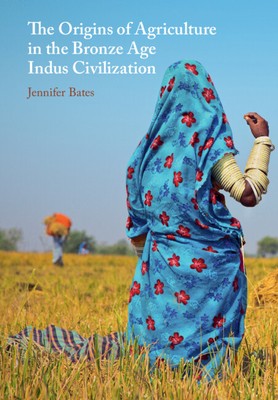
- We will send in 10–14 business days.
- Author: Jennifer Bates
- Publisher: Cambridge University Press
- ISBN-10: 1009424440
- ISBN-13: 9781009424448
- Format: 18.5 x 25.5 x 2.6 cm, kieti viršeliai
- Language: English
- SAVE -10% with code: EXTRA
The Origins of Agriculture in the Bronze Age Indus Civilization (e-book) (used book) | bookbook.eu
Reviews
Description
The Indus civilization in South Asia (c. 320 - 1500BC) was one of the most important Old World Bronze Age cultures. Located at the cross-roads of Asia, in modern Pakistan and India, it encompassed ca. one million square kilometers, making it one the largest and most ecologically, culturally, socially, and economically complex among contemporary civilisations. In this study, Jennifer Bates offers new insights into the Indus civilisation through an archaeobotanical reconstruction of its environment. Exploring the relationship between people and plants, agricultural systems, and the foods that people consumed, she demonstrates how the choices made by the ancient inhabitants were intertwined with several aspects of society, as were their responses to social and climate changes. Bates' book synthesizes the available data on genetics, archaeobotany, and archaeology. It shows how the ancient Indus serves as a case study of a civilization navigating sustainability, resilience and collapse in the face of changing circumstances by adapting its agricultural practices.
EXTRA 10 % discount with code: EXTRA
The promotion ends in 21d.02:46:21
The discount code is valid when purchasing from 10 €. Discounts do not stack.
- Author: Jennifer Bates
- Publisher: Cambridge University Press
- ISBN-10: 1009424440
- ISBN-13: 9781009424448
- Format: 18.5 x 25.5 x 2.6 cm, kieti viršeliai
- Language: English English
The Indus civilization in South Asia (c. 320 - 1500BC) was one of the most important Old World Bronze Age cultures. Located at the cross-roads of Asia, in modern Pakistan and India, it encompassed ca. one million square kilometers, making it one the largest and most ecologically, culturally, socially, and economically complex among contemporary civilisations. In this study, Jennifer Bates offers new insights into the Indus civilisation through an archaeobotanical reconstruction of its environment. Exploring the relationship between people and plants, agricultural systems, and the foods that people consumed, she demonstrates how the choices made by the ancient inhabitants were intertwined with several aspects of society, as were their responses to social and climate changes. Bates' book synthesizes the available data on genetics, archaeobotany, and archaeology. It shows how the ancient Indus serves as a case study of a civilization navigating sustainability, resilience and collapse in the face of changing circumstances by adapting its agricultural practices.


Reviews